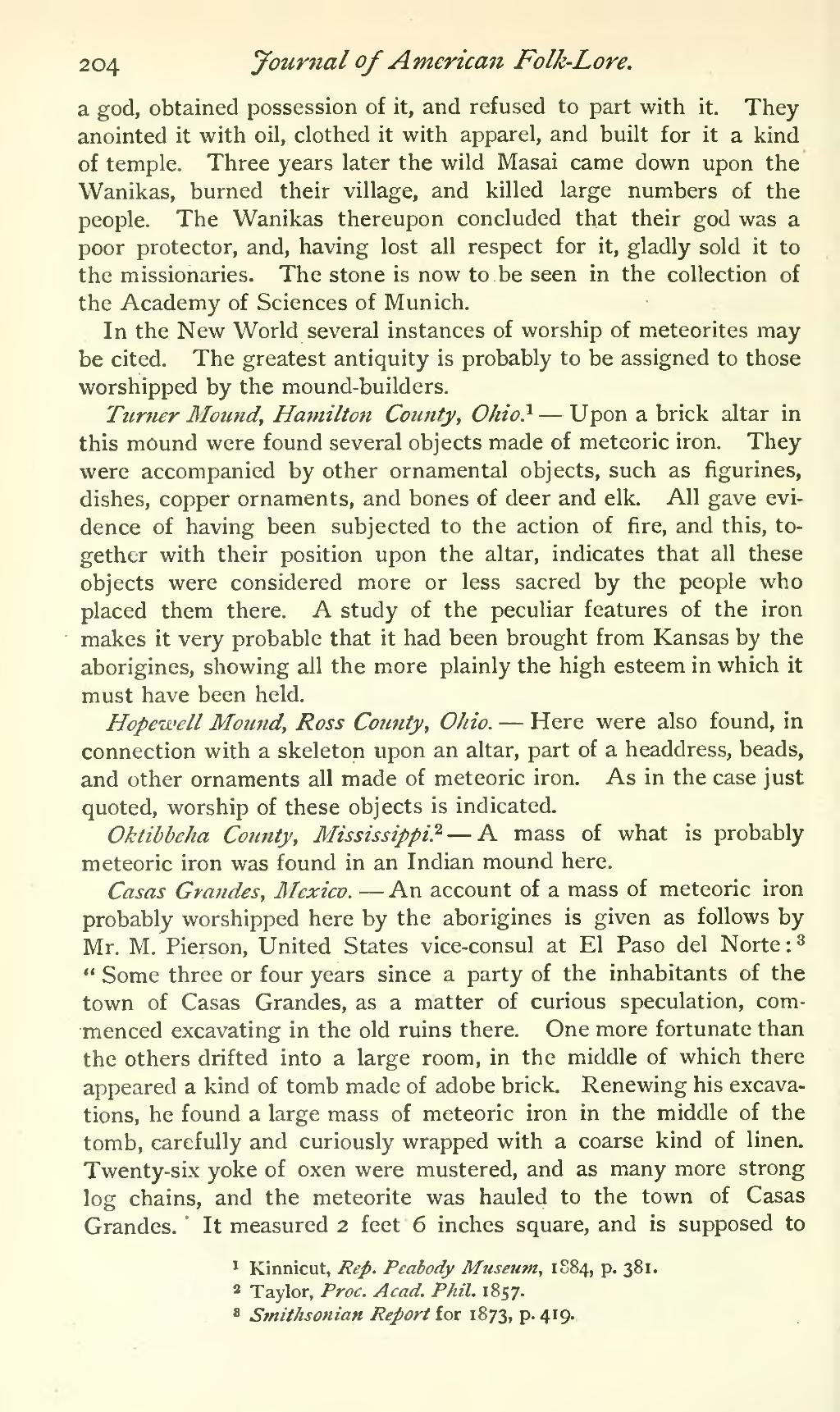204 Journal of American Folk-Lore.
a god, obtained possession of it, and refused to part with it. They anointed it with oil, clothed it with apparel, and built for it a kind of temple. Three years later the wild Masai came down upon the Wanikas, burned their village, and killed large numbers of the people. The Wanikas thereupon concluded that their god was a poor protector, and, having lost all respect for it, gladly sold it to the missionaries. The stone is now to.be seen in the collection of the Academy of Sciences of Munich.
In the New World several instances of worship of meteorites may be cited. The greatest antiquity is probably to be assigned to those worshipped by the mound-builders.
Tttrner Moicnd, Hamilton County, Ohio} — Upon a brick altar in this mound were found several objects made of meteoric iron. They were accompanied by other ornamental objects, such as figurines, dishes, copper ornaments, and bones of deer and elk. All gave evi- dence of having been subjected to the action of fire, and this, to- gether with their position upon the altar, indicates that all these objects were considered more or less sacred by the people who placed them there. A study of the peculiar features of the iron makes it very probable that it had been brought from Kansas by the aborigines, showing all the more plainly the high esteem in which it must have been held.
Hopewell Mound, Ross County, Ohio. — Here were also found, in connection with a skeleton upon an altar, part of a headdress, beads, and other ornaments all made of meteoric iron. As in the case just quoted, worship of these objects is indicated.
Oktibbeha Co?inty, Mississippi. 2 — A mass of what is probably meteoric iron was found in an Indian mound here.
Casas Grandes, Mexico. — An account of a mass of meteoric iron probably worshipped here by the aborigines is given as follows by Mr. M. Pierson, United States vice-consul at El Paso del Norte : 3 " Some three or four years since a party of the inhabitants of the town of Casas Grandes, as a matter of curious speculation, com- menced excavating in the old ruins there. One more fortunate than the others drifted into a large room, in the middle of which there appeared a kind of tomb made of adobe brick. Renewing his excava- tions, he found a large mass of meteoric iron in the middle of the tomb, carefully and curiously wrapped with a coarse kind of linen. Twenty-six yoke of oxen were mustered, and as many more strong log chains, and the meteorite was hauled to the town of Casas Grandes. ' It measured 2 feet 6 inches square, and is supposed to
1 Kinnicut, Rep. Peabody Museum, 1884, p. 381.
2 Taylor, Proc. Acad. Phil. 1857.
8 Smithsonian Report for 1873, p. 419.
�� �
